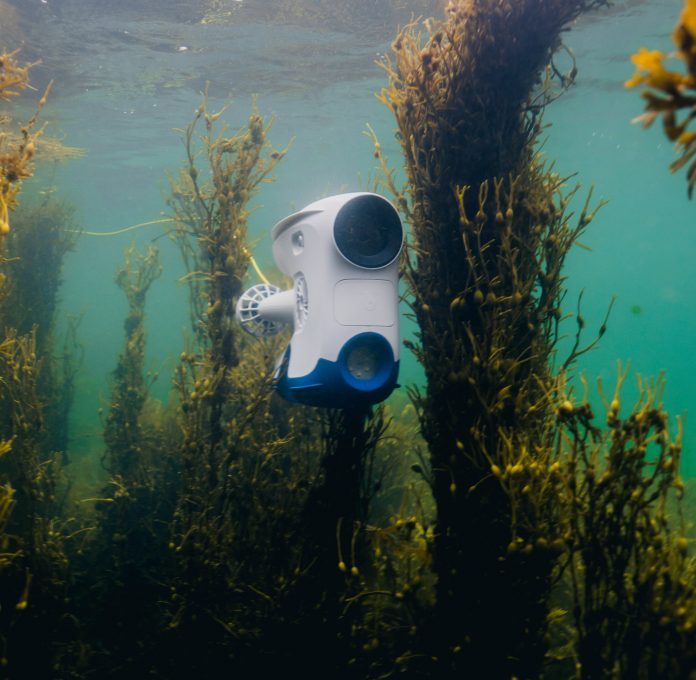“When the Armed Forces calls, you of course stand to attention.”
An underwater drone that is normally used for inspection work at salmon farms has been chosen to assist the Norwegian Armed Forces during the marine salvage operations of its wrecked frigate KNM Helge Ingstad.
The Norwegian Navy frigate sank after it was rammed by a tanker while docked in a harbour and has been there since.
Drone
Trondheim-based technology company Blueye Robotics has this week delivered two “Blueye Pioneer” underwater drones to the Norwegian Armed Forces. The Blueye Pioneer drone is usually used by fish farmers and service operators to perform visual underwater inspections at fish farms without the need for divers or ROVs.

“Our underwater drone is normally utilised to inspect cages and fish welfare at fish farms or vessel hulls. Although the nature of this assignment is quite unusual, our drone is designed specifically for this type of inspection work. Compared to the total cost of the salvage operation, this is a very modest investment for the Norwegian Armed Forces as our drones are priced at a level where also private individuals can afford to buy it,” said Erik Dyrkoren, co-founder and CEO of Blueye Robotics.
Torpedos
The compact and easily-manoeuvrable underwater drones from Blueye Robotics will, prior to the planned lifting operation, inspect the torpedo room and other important spaces inside the frigate that until now have been inaccessible.
“When the Armed Forces calls, you of course stand to attention. They want to utilise our drones because they can transmit live, HD-quality video feed to operators on the surface. At the same time, our drone measures only 45 x 25 x 35 centimetres and weighs only nine kilos. Hence, it will gain access to spaces that other underwater equipment cannot enter,” says Erik Dyrkoren.
- Read more: “It looks like it’s about to leak some oil”: Sunken frigate causes concern for salmon farmer
Earlier this week, Blueye Robotics arrived with two underwater drones at the Haakonsvern naval base. The day was spent training personnel on how to operate the drone. The drone is easy to use so armed forces personnel will be in charge of handling it during operations. The drone is operated through a smartphone or a tablet, which received live video via a thin umbilical cable to the surface and thereafter wirelessly to the smartphone/tablet.
Despite being small in size, the drone is equipped with powerful thrusters that allow it to operate in strong currents, which Hjeltefjorden – where the frigate capsized – are affected by. The drone can also dive down to 150 metres, but this will not be necessary for the KNM Helge Ingstad operations.
Drone for fish farmers
Today, the fish farming industry normally carry out visual underwater and seabed inspections by fixed camera systems, divers or ROVs (remotely operated vehicles). While utilising divers is inefficient and represents significant HSE risks, ROVs have traditionally been very costly and required extensive training – and in most cases an external operator – to manage. Fixed cameras, on the other hand, have natural limitations when it comes to reach and flexibility.
Blueye Robotics has sprung out of the Norwegian University of Science and Technology’s Centre for Autonomous Marine Operations and Systems (NTNU AMOS). Erik Dyrkoren, NTNU professor Martin Ludvigsen, Erik Haugane and Christine Spiten founded the company. Last year, Forbes placed Christine Spiten at its “30 under 30”-list of international technology entrepreneurs.


